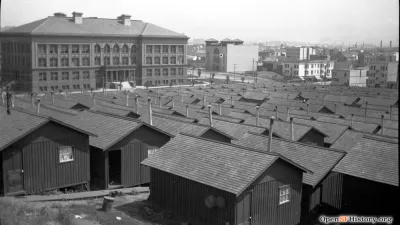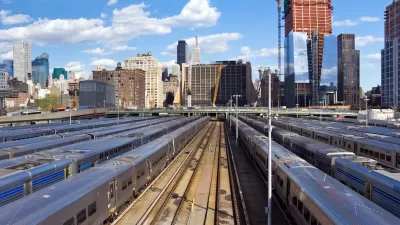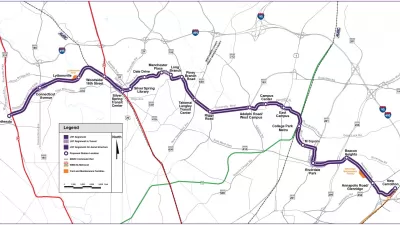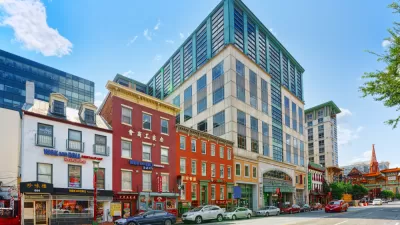In the the first of a 2-part series on transit and gentrification, WAMU's Martin Di Caro reports on the rapidly developing (and gentrifying) Georgia Avenue corridor in Washington D.C.
Peter Tatian, having lived in D.C. for over 25 years, describes the changes to the Shaw and Pleasant Plains neighborhoods as extraordinary. "I remember when that part of town was considered off limits by many people, that you wouldn't want to even go there. And now it's become one of the priciest areas," says Tatian, a senior researcher at the Urban Institute.
Resident Sylvia Robinson welcomes many of the improvements to the area, and while she does not wholly oppose the economic and demographic shifts her neighborhood has undergone, she says:
"I consider gentrification an attitude. It's the idea that you are coming in as a planner, developer, or city agency and looking at a neighborhood as if it's a blank slate. You impose development and different economic models and say that in order for this neighborhood to thrive you need to build this much housing, this much retail."
Robinson formed the Georgia Avenue Community Development Task Force to give residents a voice and ensure that new developments benefit the existing community. The Task Force has lobbied for new affordable housing that will prevent the displacement of long time residents. Advocates have also proposed making improvements to bus service that connects people to new shopping developments, as well as to jobs and home.
"The development of our community is really going to hinge on people being able to move up and down that segment of Georgia Avenue freely and easily," Robinson says.
Thanks to Jessica Brent
FULL STORY: How Transit Is Shaping the Gentrification of D.C., Part 1

Alabama: Trump Terminates Settlements for Black Communities Harmed By Raw Sewage
Trump deemed the landmark civil rights agreement “illegal DEI and environmental justice policy.”

Planetizen Federal Action Tracker
A weekly monitor of how Trump’s orders and actions are impacting planners and planning in America.

The 120 Year Old Tiny Home Villages That Sheltered San Francisco’s Earthquake Refugees
More than a century ago, San Francisco mobilized to house thousands of residents displaced by the 1906 earthquake. Could their strategy offer a model for the present?

Opinion: California’s SB 79 Would Improve Housing Affordability and Transit Access
A proposed bill would legalize transit-oriented development statewide.

Record Temperatures Prompt Push for Environmental Justice Bills
Nevada legislators are proposing laws that would mandate heat mitigation measures to protect residents from the impacts of extreme heat.

Downtown Pittsburgh Set to Gain 1,300 New Housing Units
Pittsburgh’s office buildings, many of which date back to the early 20th century, are prime candidates for conversion to housing.
Urban Design for Planners 1: Software Tools
This six-course series explores essential urban design concepts using open source software and equips planners with the tools they need to participate fully in the urban design process.
Planning for Universal Design
Learn the tools for implementing Universal Design in planning regulations.
Clanton & Associates, Inc.
Jessamine County Fiscal Court
Institute for Housing and Urban Development Studies (IHS)
City of Grandview
Harvard GSD Executive Education
Toledo-Lucas County Plan Commissions
Salt Lake City
NYU Wagner Graduate School of Public Service





























